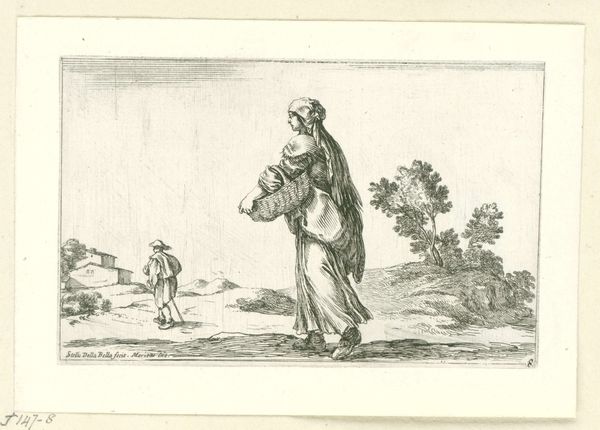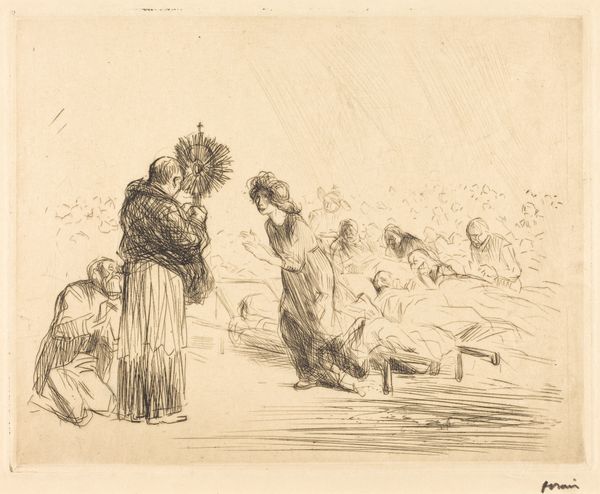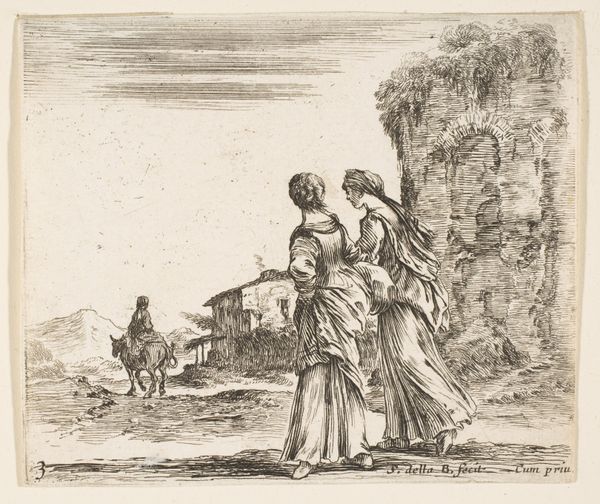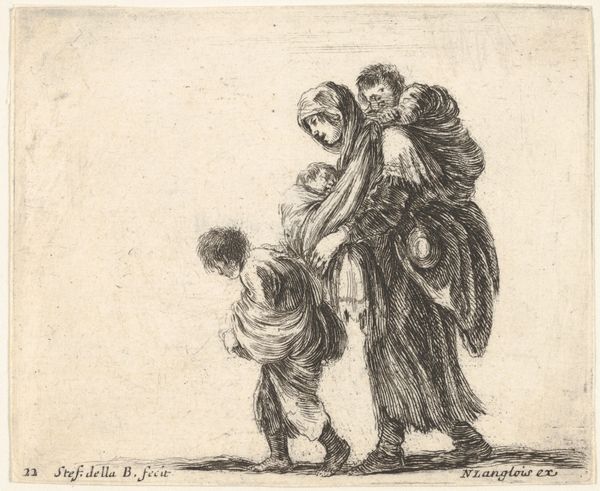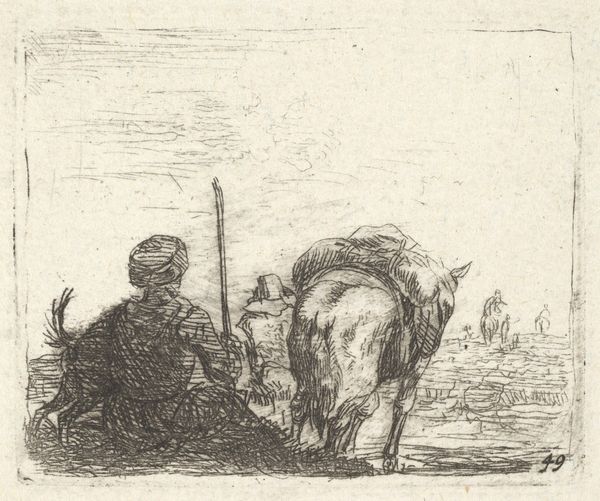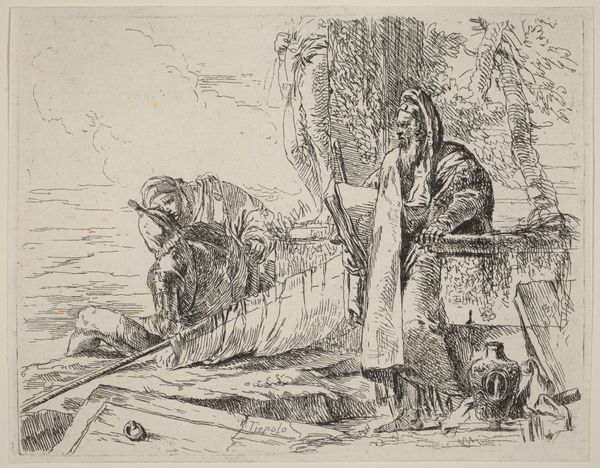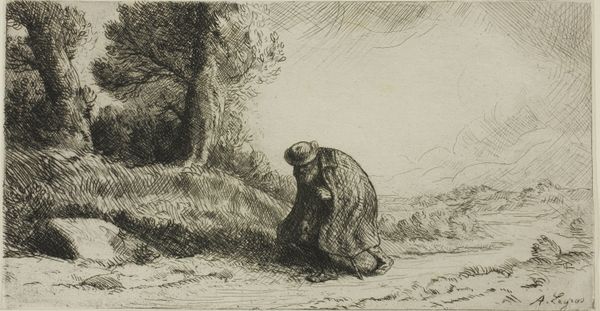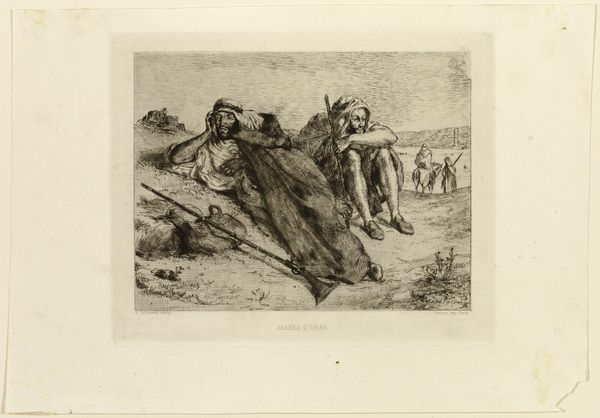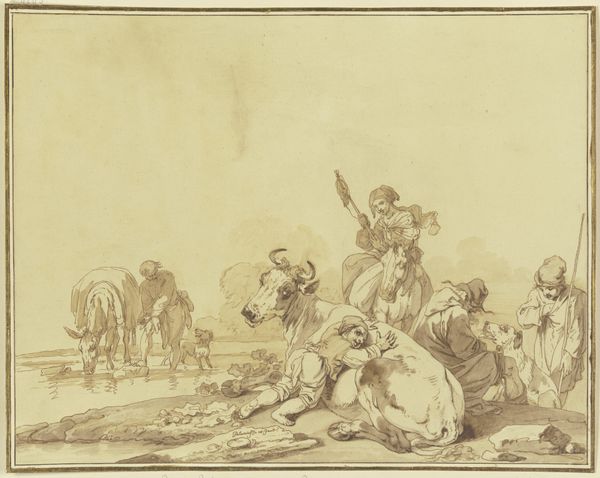
Plate 21: a poor woman to left, seen from behind, enveloping her child in a shawl, another woman seen from behind to left in background, a woman atop a horse and a man to right in background, from 'Diversi capricci' 1639 - 1649
0:00
0:00
drawing, print, etching
#
portrait
#
drawing
#
baroque
# print
#
etching
#
landscape
#
figuration
#
horse
#
men
#
genre-painting
#
history-painting
Dimensions: Sheet: 3 1/8 in. × 4 in. (8 × 10.2 cm)
Copyright: Public Domain
Curator: This etching, produced by Stefano della Bella between 1639 and 1649, is entitled "Plate 21: a poor woman to left, seen from behind, enveloping her child in a shawl, another woman seen from behind to left in background, a woman atop a horse and a man to right in background, from 'Diversi capricci.'" It's currently held in the collection of the Metropolitan Museum of Art. Editor: My immediate reaction is one of stark melancholy. The figures seem burdened, lost within the landscape's harsh expanse. There's a strong sense of vulnerability conveyed in their postures. Curator: Absolutely. Consider the historical context. This was a period marked by widespread poverty, conflict, and social upheaval. Della Bella's portrayal seems to address these struggles, centering women navigating difficult terrain. We see a community surviving on the margins, women holding up and holding onto community bonds and the young ones in the collective face of adversity. Editor: I'm drawn to the mother and child as the focal point. The shawl acts as this protective symbol, almost a sacred shroud safeguarding innocence amidst hardship. The artist masterfully uses shadow to further accentuate that. Are we looking at Mary and baby Jesus, Hagar and Ishmael? The timeless iconography is undeniable. The etching’s simple medium really focuses one’s attention on these central themes. Curator: The horse riders could suggest different echelons within the socio-economic context too: perhaps those better-off overlooking the downtrodden. I interpret the etching as speaking to the inequitable distribution of resources in the artist's contemporary setting. Editor: What strikes me most is the lack of specificity in the figures' faces. They become archetypes—everywoman, everychild—imbued with symbolic power. It lends the image a timelessness, applicable to various epochs of suffering. The etching technique itself contributes; the stark black lines against the white amplify the sense of desperation. Curator: Examining the artmaking tradition in Stefano della Bella’s Florence during the Counter-Reformation underscores the etching's daring social commentary. How radical an act was it, to offer representations of working-class folk centered as survivors worthy of aestheticization? Editor: Thank you. Viewing it through that lens shifts the emphasis. Della Bella doesn’t offer despair, but a defiant resilience embedded in the cultural memory. It reminds us that the will to preserve bonds has always transcended circumstance.
Comments
No comments
Be the first to comment and join the conversation on the ultimate creative platform.
